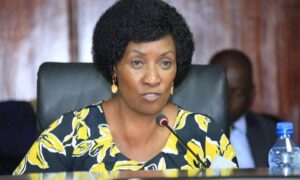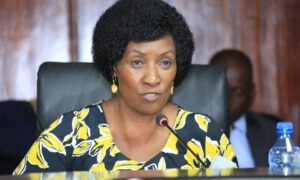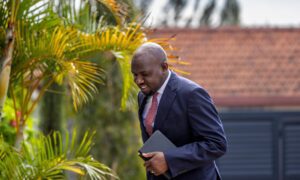The government of Kenya has taken significant strides to bolster the education sector by announcing plans to employ 20,000 Junior Secondary School (JSS) teachers and promote over 30,000 more, marking a pivotal step in addressing the critical shortage of educators across the country. This landmark decision comes following a fruitful six-day joint meeting between the Teachers Service Commission (TSC) and the Kenya Union of Post-Primary Education Teachers (KUPPET) at Sawela Lodge in Naivasha.
The KUPPET National Chairman, Omboko Milemba, disclosed that an estimated Ksh.4 billion would be allocated for the recruitment of the 20,000 teachers, signaling a resolute commitment to tackling the burgeoning crisis in JSS education nationwide. Notably, out of the 50,000 teachers who had languished without promotion for years, a staggering 30,000 are set to benefit from the impending promotions in the forthcoming financial year.
Milemba emphasized the long-standing plight of teachers, asserting that since 2017, a significant portion had been denied rightful promotions. However, the outcome of the Naivasha meeting signifies a watershed moment, as the government has pledged to address this issue effectively, with the new measures slated to take effect from June of this year.
“The commission has also promised to look into the issue of those teachers who had got ten presidential decrees of being promoted and ensure they are promoted,” Milemba affirmed, underlining the government’s commitment to rectifying past injustices and ensuring equitable treatment for all educators.
Furthermore, the union Secretary General, Akelo Misori, provided additional insights into the comprehensive reforms envisaged within the education sector. Misori revealed that a significant proportion of the newly recruited JSS teachers, approximately 2,000, would be strategically deployed to Arid and Semi-Arid Lands (ASAL) regions, underscoring the government’s concerted efforts to address educational disparities and enhance access to quality education in marginalized areas.
Moreover, TSC has pledged to transition all 26,000 intern teachers recruited in 2023 to permanent and pensionable terms by January 2025, signaling a pivotal shift towards ensuring job security and welfare for educators across the board.
In response to longstanding grievances raised by the union, TSC has committed to reviewing the Career Progression Guidelines, which have contributed to stagnation among teachers, and will embark on the development of new guidelines through public participation. This proactive approach reflects a concerted effort to address systemic challenges and foster a conducive environment for professional growth and development within the teaching profession.
Furthermore, the recent promotion of over 50,000 teachers following an extensive audit process has been lauded as a significant milestone in recognizing and rewarding deserving educators. Misori commended TSC for its diligence in addressing concerns surrounding promotions, noting that only a handful of cases required remediation, thus reaffirming the integrity and transparency of the promotion process.
However, amidst these positive developments, the union remains vigilant in advocating for improved staffing ratios in schools, particularly in Junior Secondary Schools, where the current allocation of two teachers per stream falls short of meeting the diverse learning needs of students. Addressing this shortfall is paramount to ensuring optimal learning outcomes and fostering a conducive learning environment for all students.
Moreover, concerns regarding delayed pension disbursements for teachers have been brought to the forefront, with TSC collaborating closely with the Department of Pensions to expedite administrative processes and alleviate the financial burden on retired educators.
In conclusion, the government’s commitment to enhancing the education sector through the recruitment of additional teachers and the promotion of deserving educators underscores a transformative vision aimed at ensuring equitable access to quality education for all Kenyan students. These concerted efforts, coupled with ongoing reforms and initiatives, are poised to usher in a new era of educational excellence and opportunity for generations to come.

























